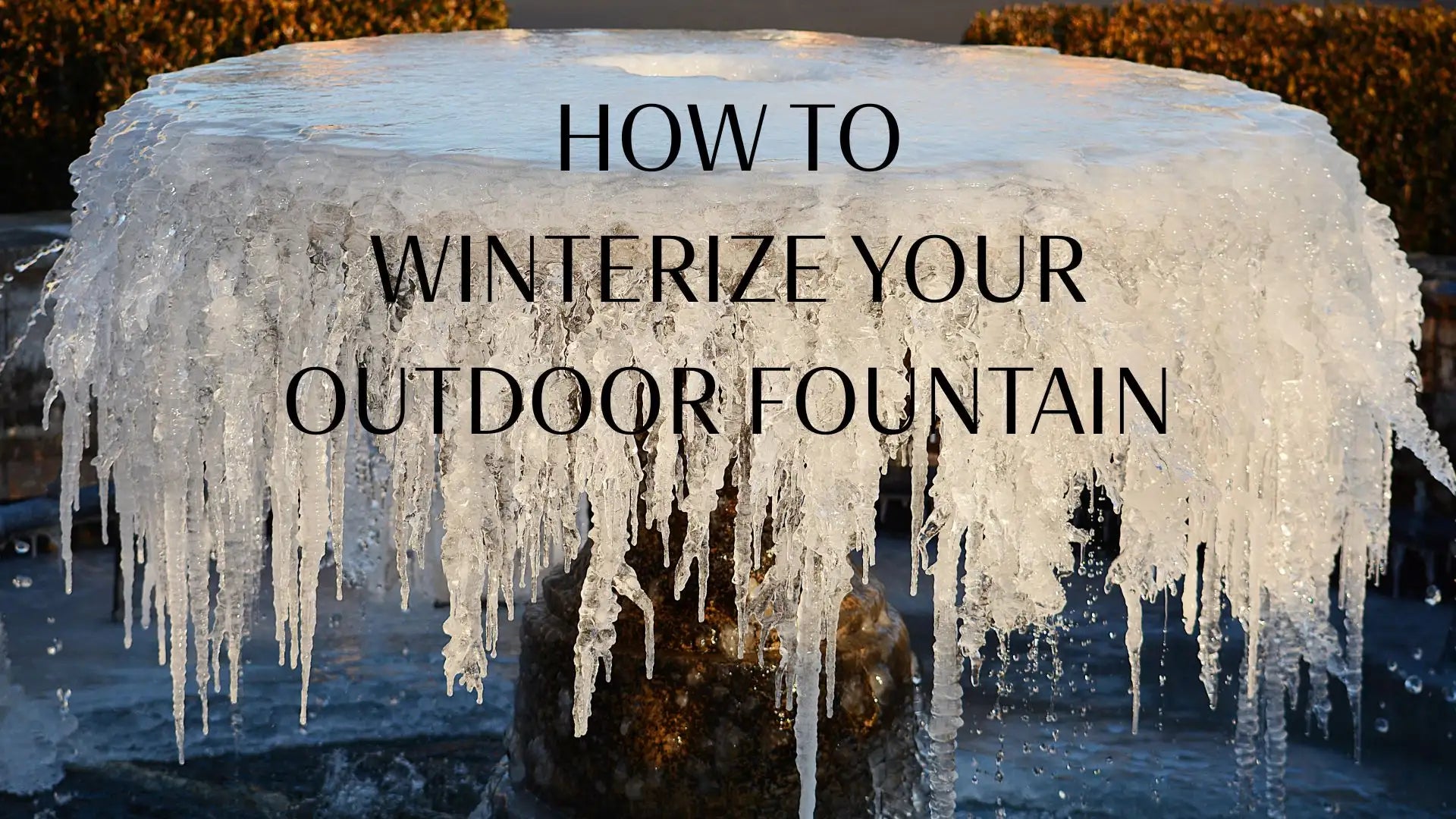As the colder months roll in, it’s important to give your outdoor fountain a little extra care. When water freezes, it expands—and that can lead to cracked basins, damaged pumps, and repairs that no one wants to deal with come spring. Taking the time to properly winterize your fountain now not only protects your investment, but also ensures it’s ready to run beautifully again once the warmer weather returns.
Do Water Features Freeze in Winter?
Fountains can absolutely freeze during winter. It doesn’t take much, just a few nights below freezing and any water left inside starts turning to ice. When it freezes, it expands, and that pressure is what messes things up. You’ll usually see cracks around the basin or the pump acting up later because something inside got pushed out of place. A lot of people leave their fountains full all season and think it’s fine, but that's usually when the damage happens. Even if you have a large outdoor fountain or a smaller outdoor water feature, you still need to winterize it if you want it to hold up until spring.

Step-by-Step Guide to Winterizing Your Outdoor Fountain
1. Drain the Water Completely
Leaving water in the fountain during freezing temperatures can lead to cracks and structural damage. To prevent this, drain all water from the fountain and basin. Use a sponge or towel to soak up any remaining water to ensure it is scorched.
2. Clean the Fountain Thoroughly
After draining, take a few minutes to clean the fountain. Dirt, algae, and leftover mineral deposits only get harder to deal with later. Mild soap and water normally work fine, or you can use a fountain-safe cleaner. A quick scrub now keeps things looking good and running smoothly when you set it back up.
3. Take Out the Pump and Store It Indoors
The pump is usually the first part to get damaged by freezing temps. Remove it, rinse off any debris, and keep it indoors for the winter—somewhere dry, like a shelf in the garage or a storage cabinet. This helps extend its lifespan and makes sure it’s ready to go when spring returns.
4. Cover the Fountain
A weather-resistant, breathable cover keeps out snow, leaves, and ice. Make sure the fountain cover is secured tightly so moisture doesn’t get trapped underneath; trapped water can lead to mold or mildew over time.
5. Add Something Absorbent to the Basin
If your fountain has to stay outside and uncovered, add towels, burlap, or any absorbent material to the basin. These materials help catch moisture so it doesn’t pool and freeze. It’s a simple step, but it can prevent a lot of stress on the fountain’s surface.
6. Raise the Fountain Off the Ground
For smaller fountains, it’s usually safest to bring them indoors—garage, shed, porch, anywhere protected. If moving it isn’t realistic, place bricks or wooden blocks under the base. Keeping it off the ground helps prevent the bottom from freezing to surfaces or sitting in ice.

Extra Winter Care Tips for Your Fountain
-
Check on it every now and then.
-
Even if the fountain is wrapped up and protected, it doesn’t hurt to take a quick look throughout the winter. Make sure there isn’t moisture collecting under the cover and watch for any early signs of damage.
-
Skip the antifreeze.
-
It might seem like an easy solution, but antifreeze can be dangerous to pets, birds, and other wildlife. It’s safer to simply drain the water completely and keep the fountain covered.
-
Give it a once-over before setting it up in spring.
-
When the weather warms up and you’re ready to refill the fountain, make sure everything still looks solid—no cracks, no loose parts. If something seems worn out, replace it before running the pump again.
Common Mistakes People Make in Winter
-
A big one is leaving water inside the fountain. Even just a small amount can freeze and expand, and that’s usually how cracks show up later. Most folks don’t even notice the damage until spring.
-
Another mistake is forgetting about the pump. If it stays inside the fountain while the water freezes, parts inside the pump can get damaged or jammed, and then it won’t run properly when you set everything up again.
-
And try not to cover the fountain with plastic. It seems like it would help, but plastic traps moisture underneath and you end up with mildew or weird slime buildup. A breathable cover works way better.
Winterizing Different Fountain Materials
Not all fountains handle cold weather the same way, so the care you give them can vary a bit depending on what they’re made of.
-
Concrete or stone fountains are usually the ones that crack the easiest. They hold moisture, and once that freezes, the surface can start splitting. Make sure they’re as dry as possible before covering—those materials don’t bounce back from freeze damage very well.
-
Fiberglass and resin fountains hold up better in winter, but that doesn’t mean you can just leave them alone. They should still be drained and covered, mainly to protect the finish and keep the pump safe.
-
Ceramic fountains can be the most fragile in cold weather. They chip and crack easily once the temperature drops, so the safest option is usually to take them indoors if you can.
Winterizing your fountain might feel like one more thing on the to-do list, but it really does help in the long run. Once the temperatures drop, even a tiny bit of leftover water can cause way more damage than people expect, and fixing that in spring isn’t cheap. So yeah—drain it, clean it out, stash the pump somewhere safe, and just make sure it’s covered through the cold months. A few small steps now usually means you can set everything back up in spring without dealing with cracks, leaks, or buying new parts again.

